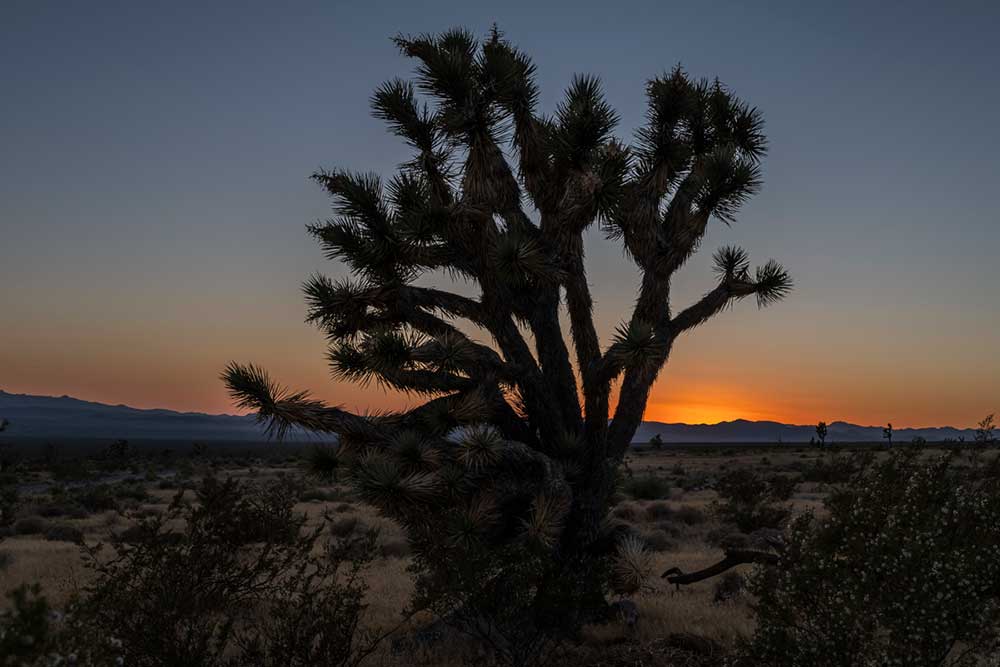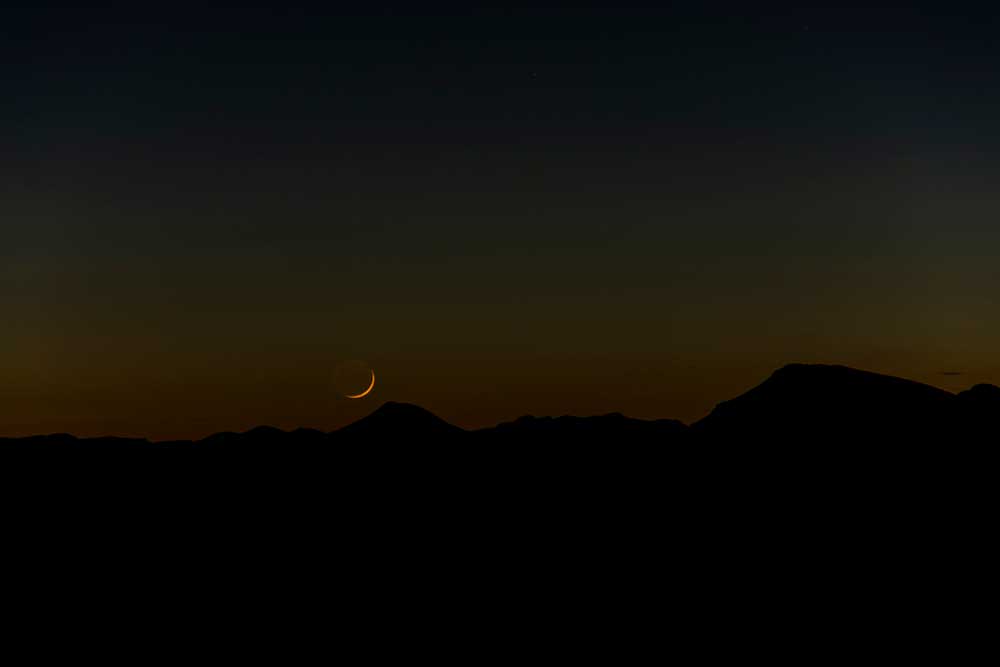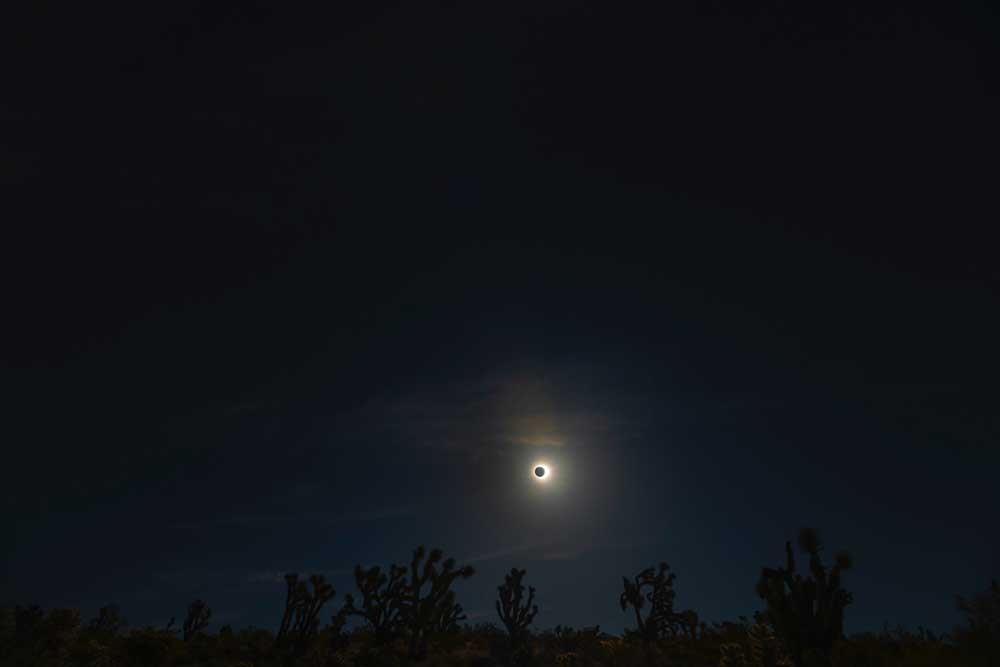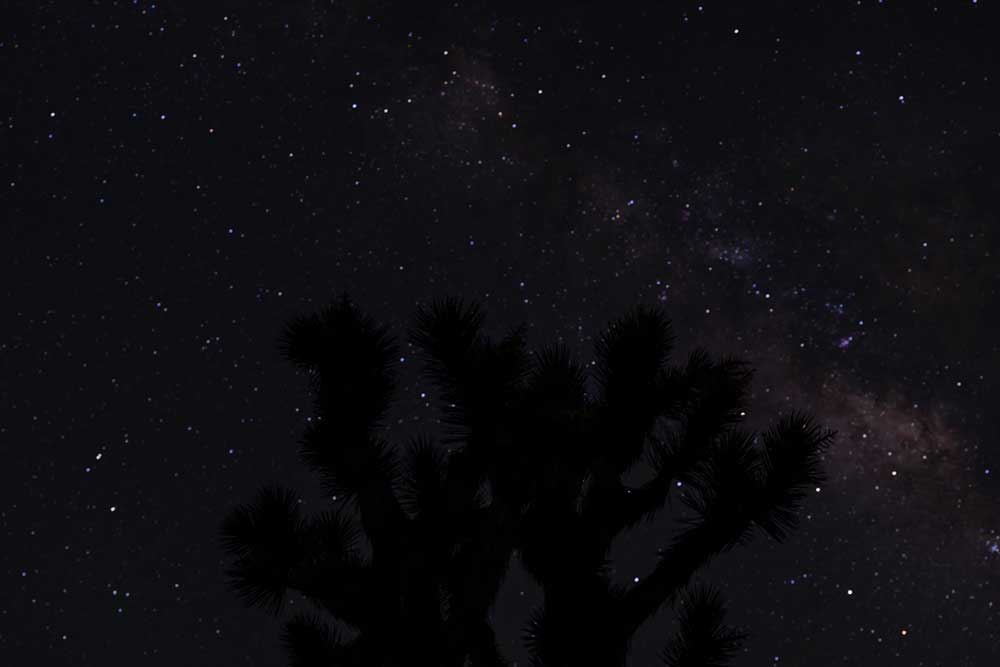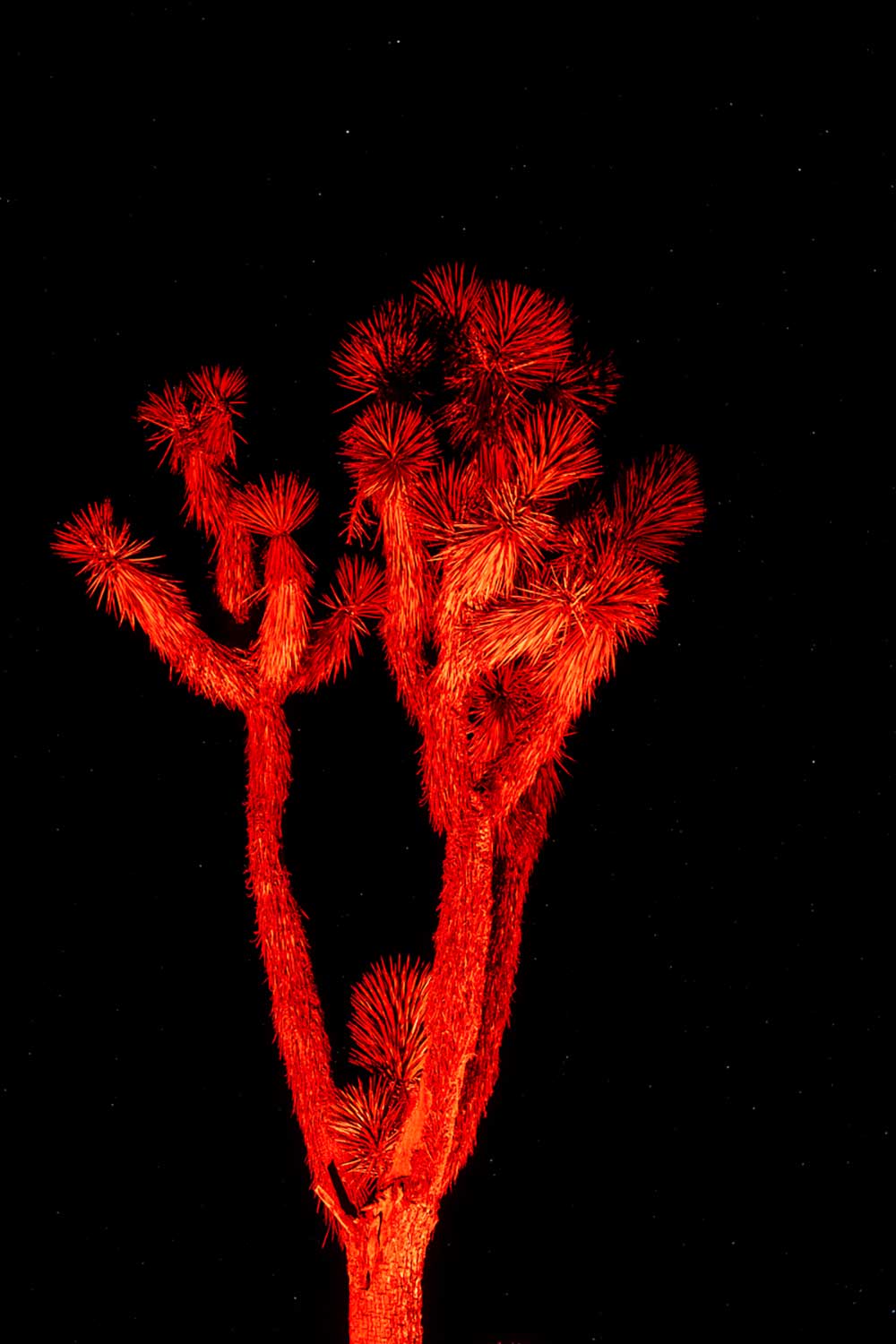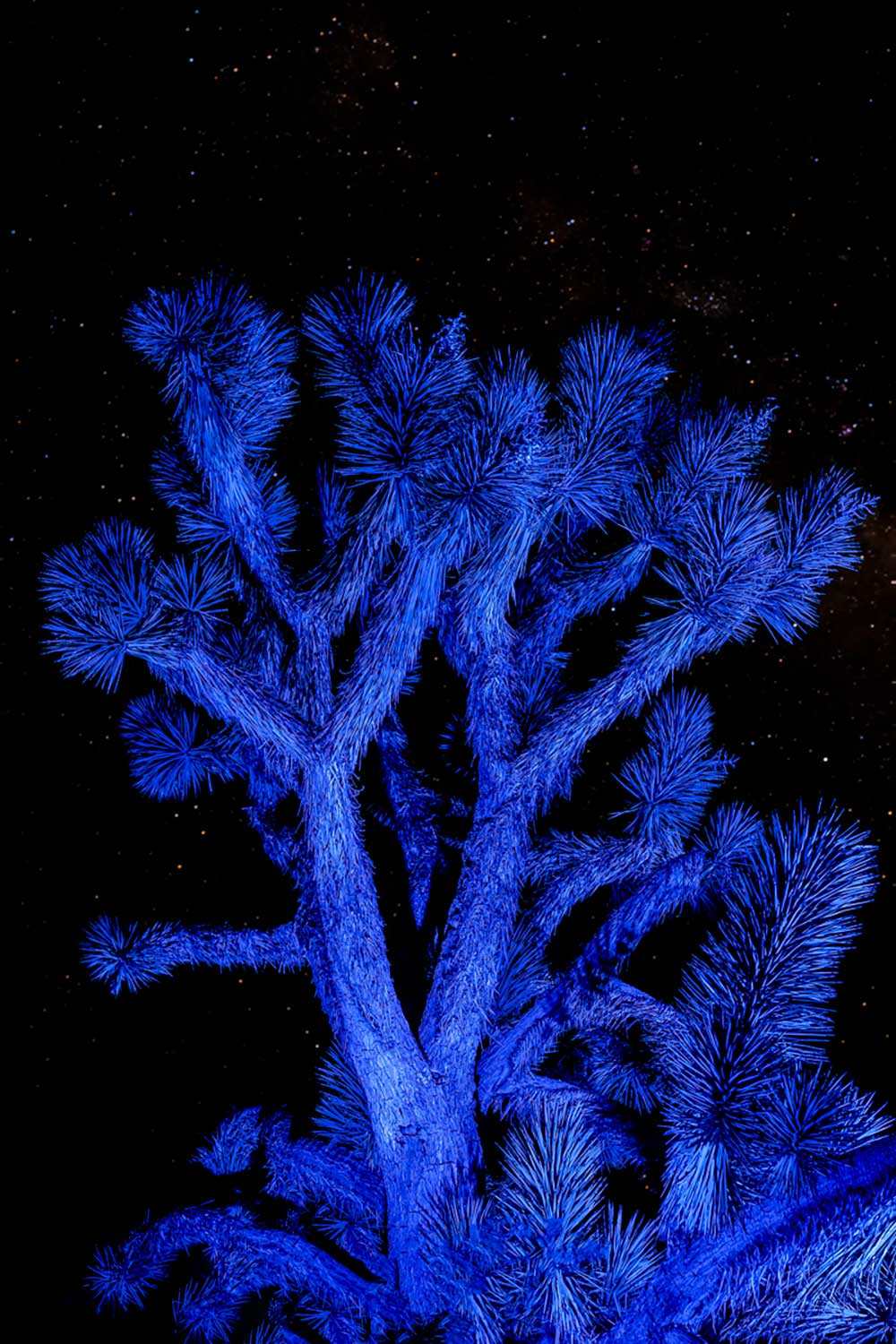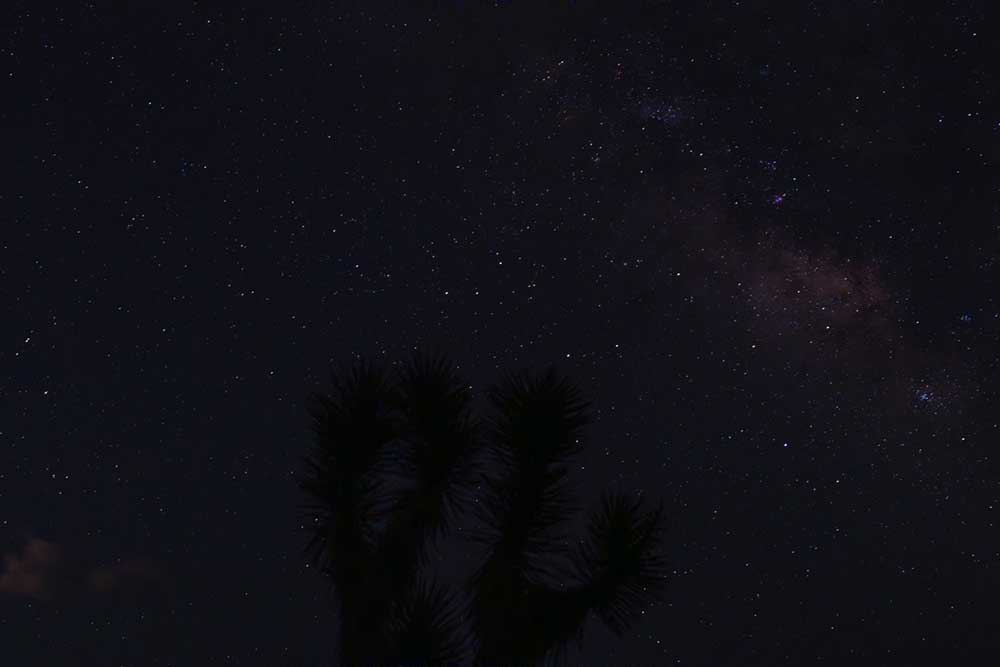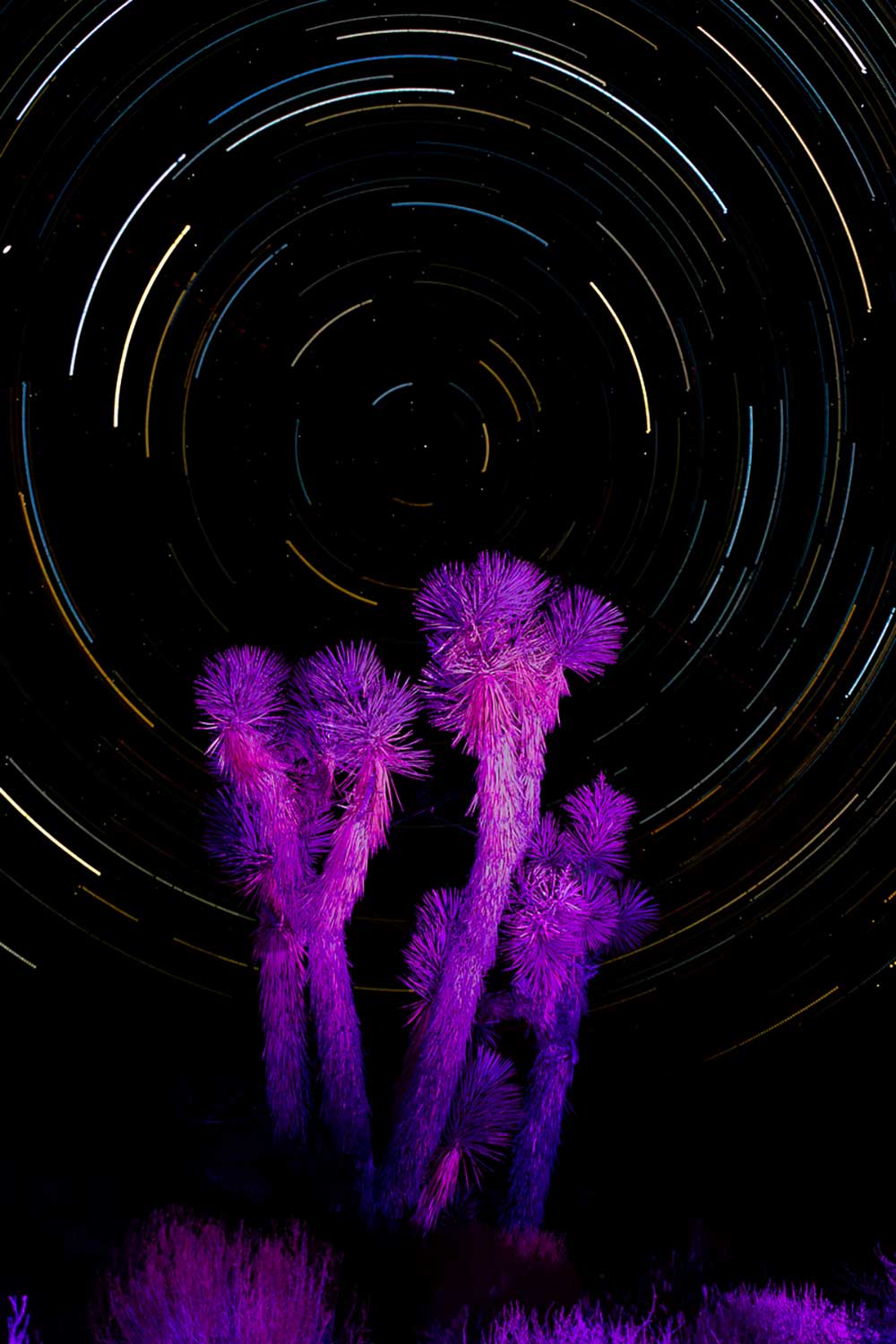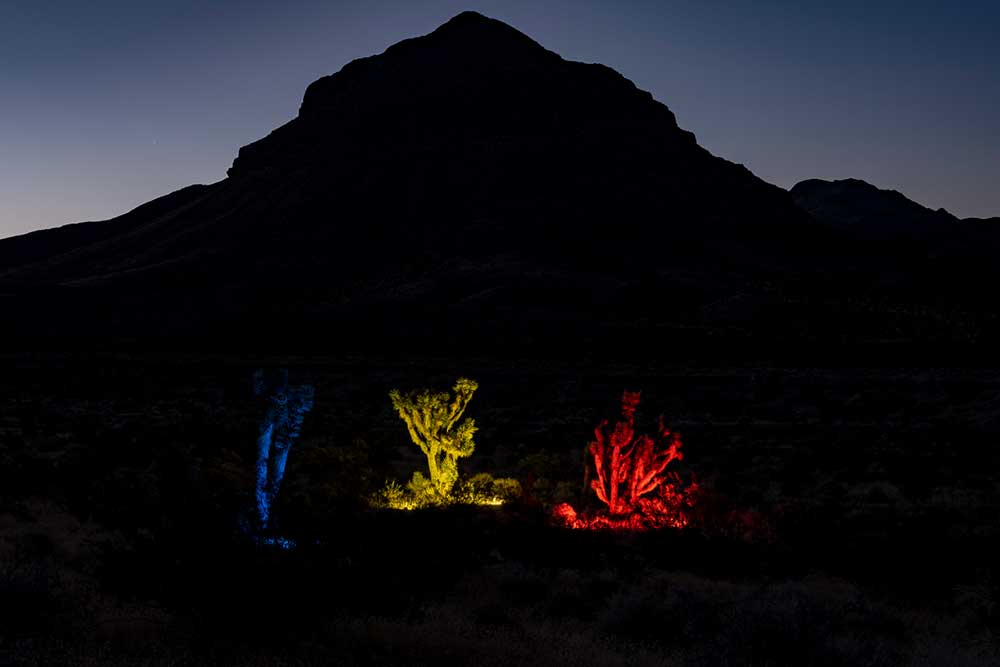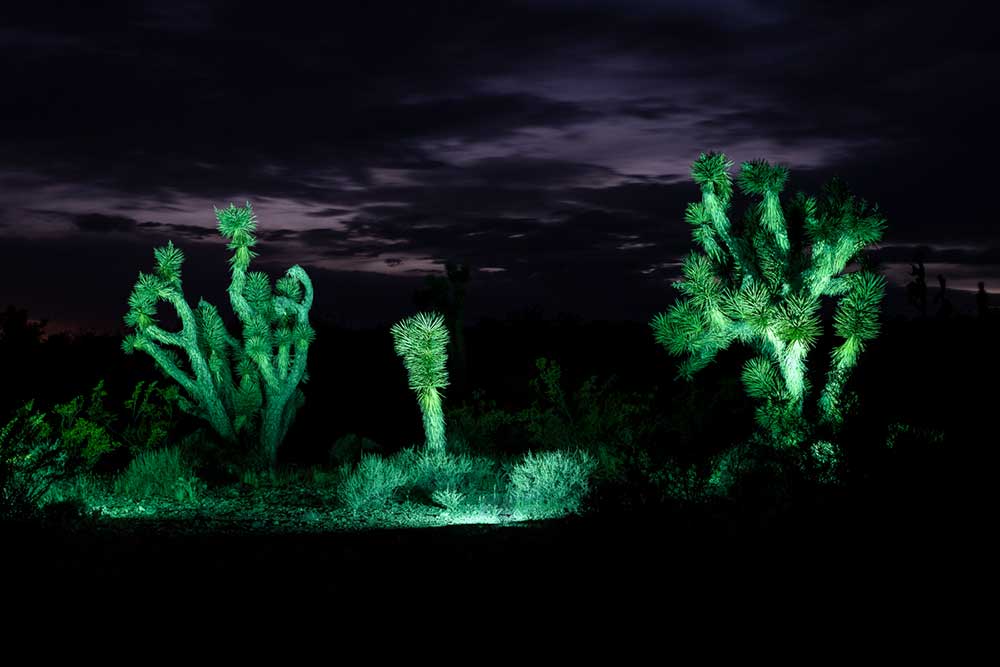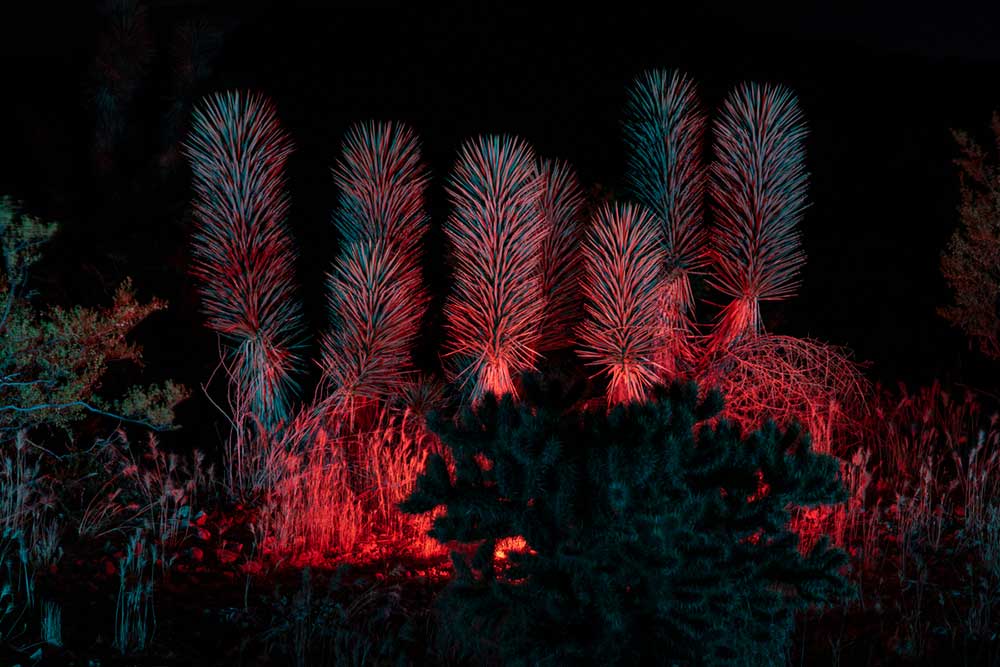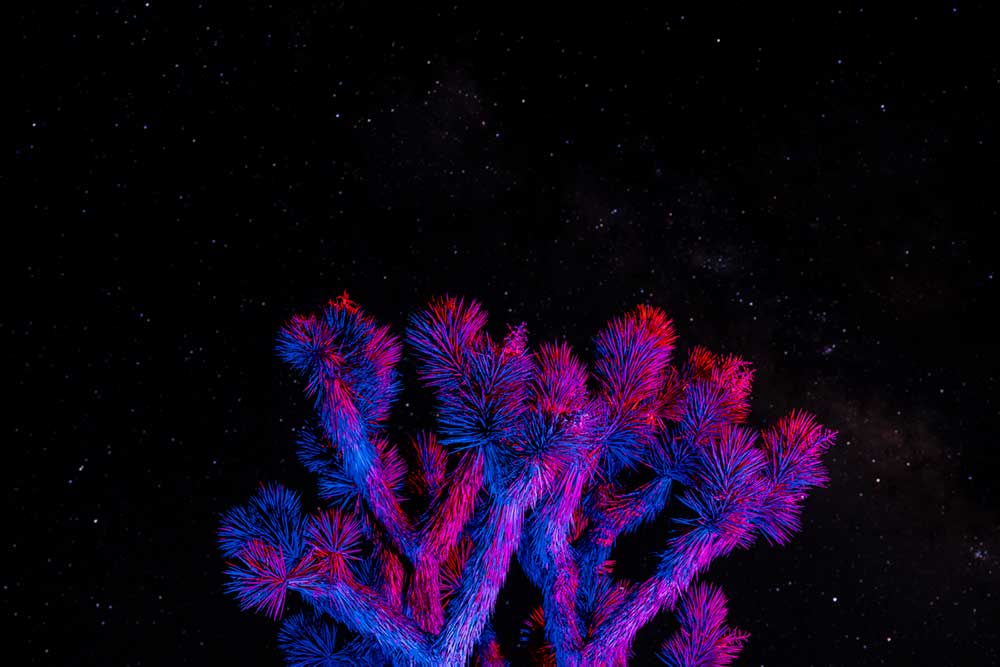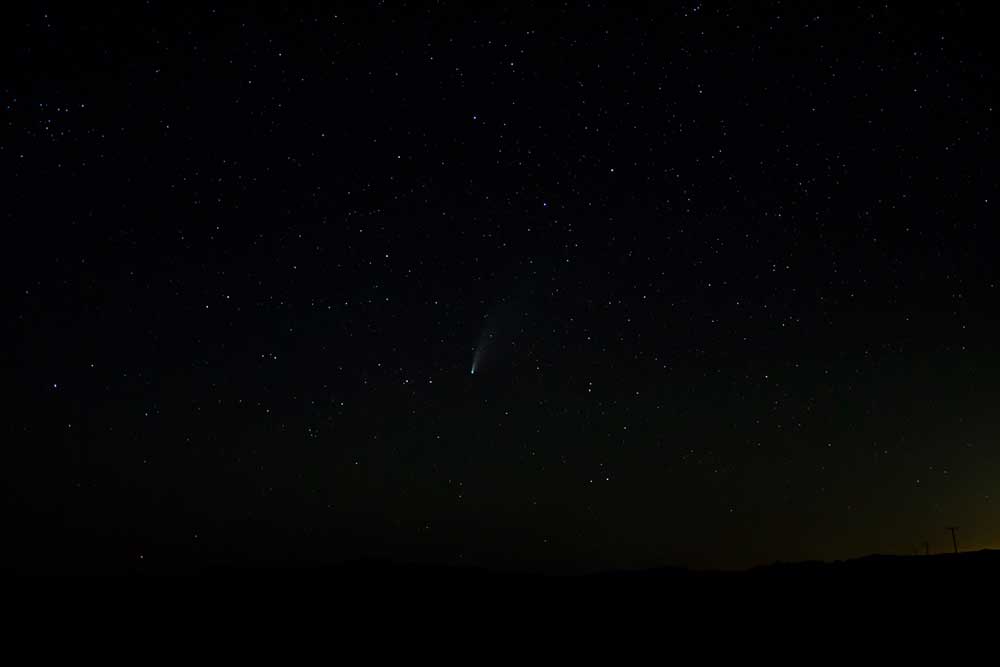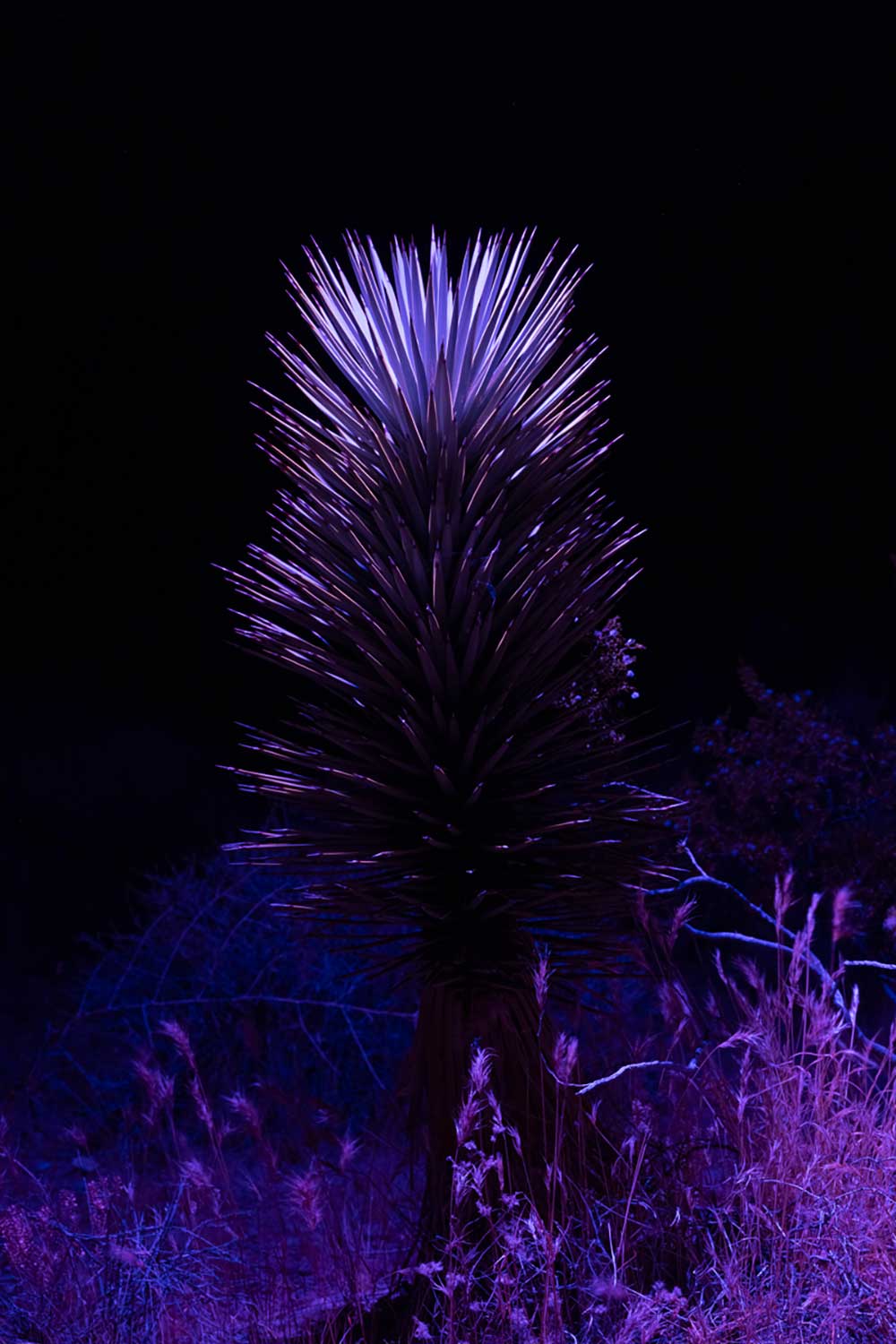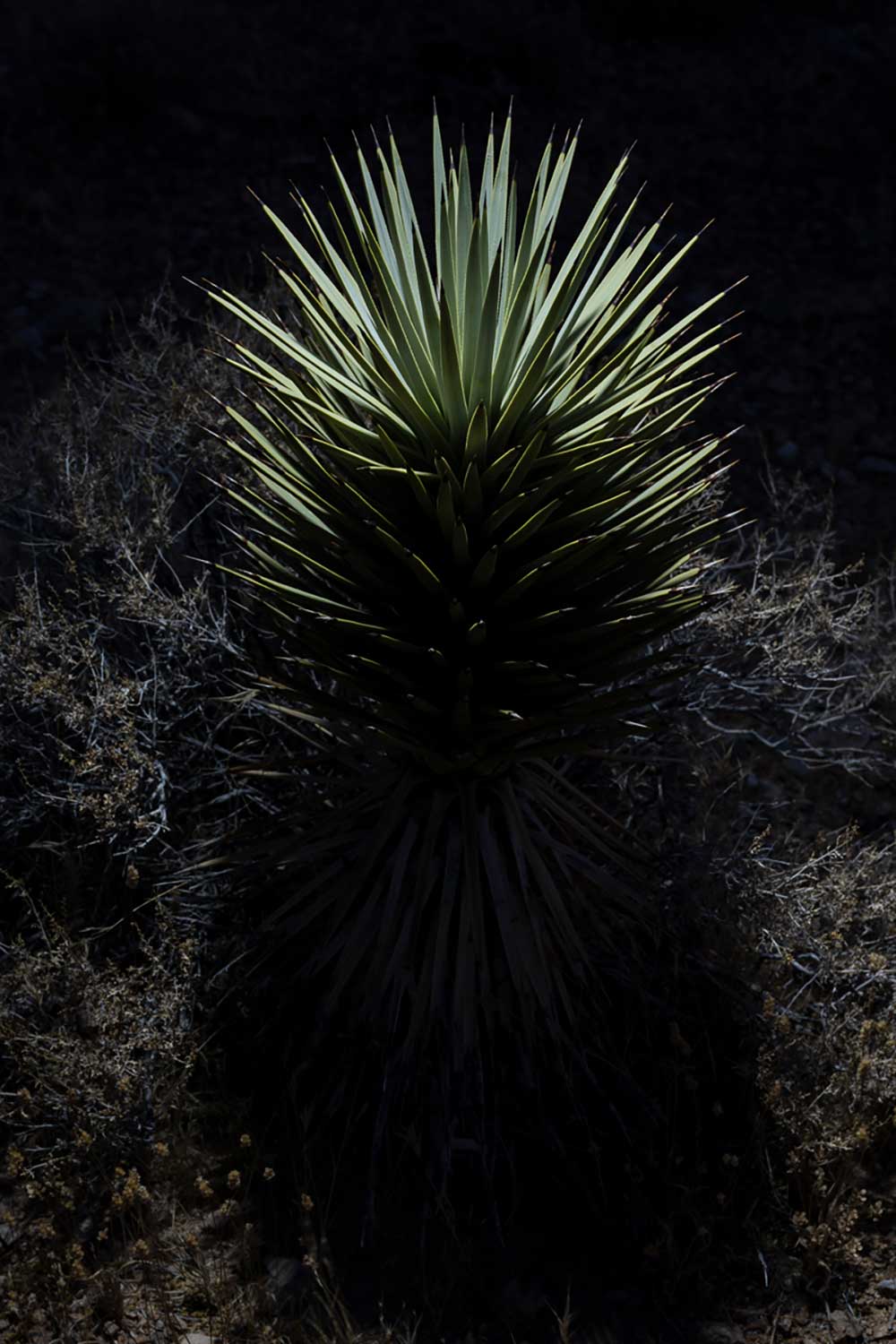Fred Brashear Jr. is a photo-based artist from Southern California focusing on the relationship between humans and the natural environment. His work, «While the Stars Look Down,» photographically captures the otherworldly essence of the desert landscape at night, emphasizing the unique qualities of the Mojave Desert and showcasing the Joshua tree in a mysterious manner through the interplay of color, time, and light.
Originally, the project was an extension of his ongoing eight-year endeavor to document the struggles faced by the Joshua tree due to climate change and human intrusion into its natural habitat. However, it took a new direction when the Western Joshua Tree Conservation Act was passed in California, piquing his curiosity about Joshua tree populations residing beyond the protective bounds of this legislation. This led him to explore and photograph the outskirts of the Mojave Desert in Arizona, Utah, and Nevada, where these unique plants exist. Most of the photographs were taken during the scorching summer months of the American Southwest, but he soon realized the allure of capturing the desert at night. This shift became an intriguing venture into the secret world of the nocturnal desert landscape. What appeared lifeless and barren during the daytime manifested a vibrant ecosystem teeming with nocturnal creatures when darkness fell. Initially, as creatures emerged, the sounds of tiny feet scurrying through the desert grass in the disorienting darkness was unsettling. However, armed with portable lights and homemade color filters, he illuminated the Joshua trees, allowing them to assume a commanding presence within their desert surroundings. Each tree seemed to pose for the camera, demanding nothing more than acknowledgment of its unique beauty. Responding to their silent plea, he contemplated the changes these remarkable plants have witnessed over the centuries, their enduring existence witnessed only by the stars above.
Joshua trees (Yucca brevifolia, spp.) have a rich history spanning approximately 2.5 million years, originating from the Pleistocene era. 25,000 years ago, the current desert landscape was a lush expanse of forests, lakes, and rivers inhabited by prehistoric creatures such as mammoths, ground sloths, and saber-toothed cats. These ancient trees have withstood the test of time, adapting to survive in the harsh desert environment. They have served as witnesses to the ever-changing world around them, silently observing the rise and fall of civilizations, the passing of countless generations, and the transformation of landscapes.
However, with the encroachment of human activity and the rapid progression of climate change, this iconic species of the Mojave Desert now faces the threat of extinction in an increasingly inhospitable environment. Human encroachment includes factors such as urban development, agriculture, and infrastructure expansion, which lead to habitat destruction and fragmentation. Climate change exacerbates the situation, as rising temperatures, prolonged droughts, increased fire danger, and altered rainfall patterns challenge the Joshua tree’s ability to survive and reproduce.
The plight of the Joshua tree is not an isolated incident, but a microcosm of the larger ecological challenges faced by numerous species worldwide. It serves as a stark reminder of the urgent need for conservation efforts and sustainable practices to protect and preserve our fragile ecosystems. Through his photography, he aims to raise awareness about the delicate balance between human progress and the preservation of biodiversity. By capturing the haunting beauty of the desert landscape and the resilience of the Joshua tree, he hopes to inspire viewers to appreciate the interconnectedness of all living beings and take action to safeguard our natural heritage.
In conclusion, «While the Stars Look Down» is not merely a collection of photographs but a visual narrative that tells the story of the Mojave Desert, the Joshua tree, and their struggle for survival. It highlights the fragile beauty of our planet and the need to protect it for future generations. As the stars continue to gaze down upon the Mojave Desert, let us ensure that their silent witness is not in vain and that we make a conscious effort to preserve the wonders of our natural world. [Official Website]



